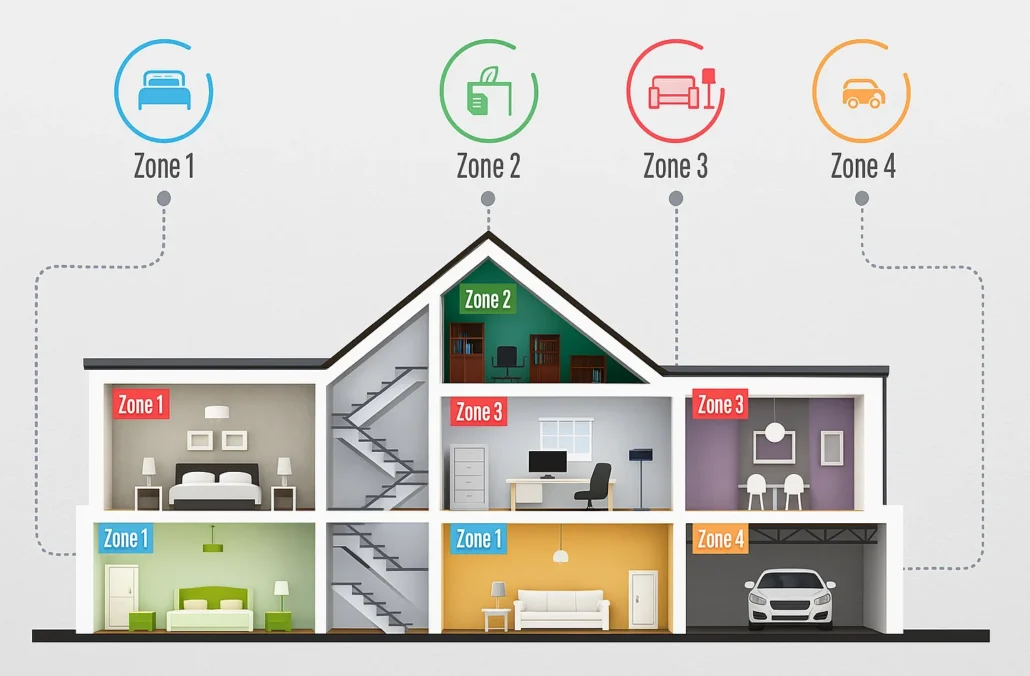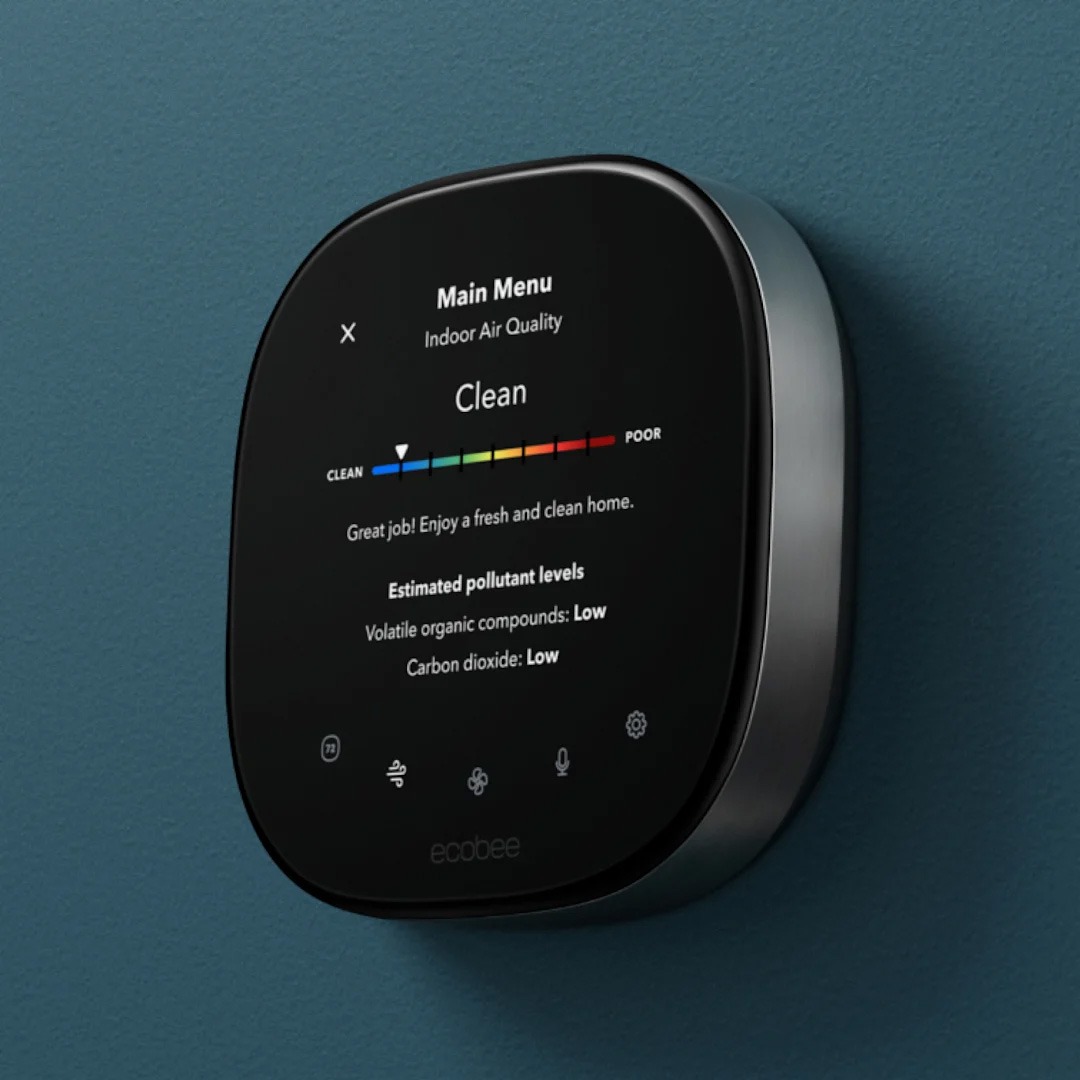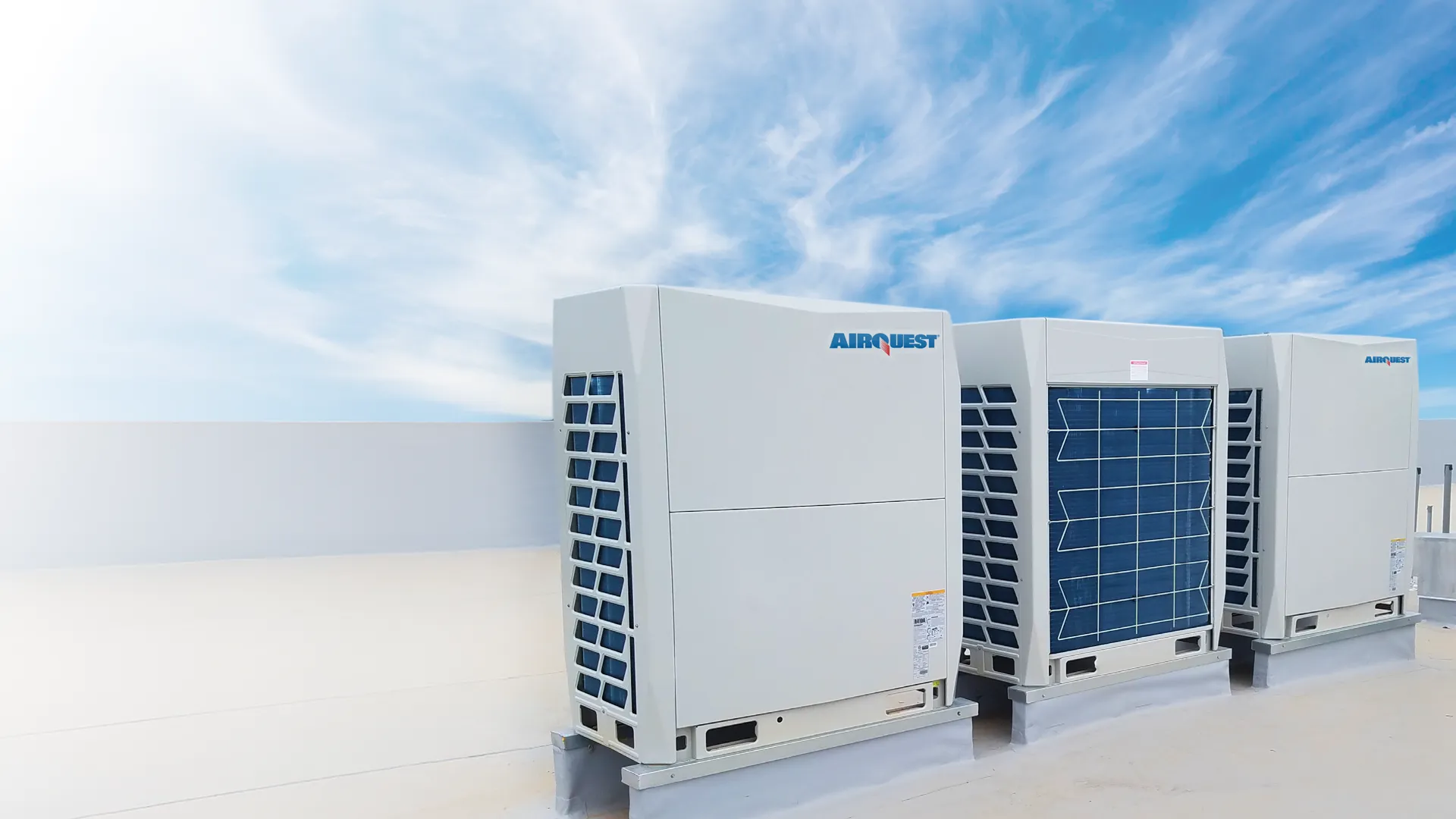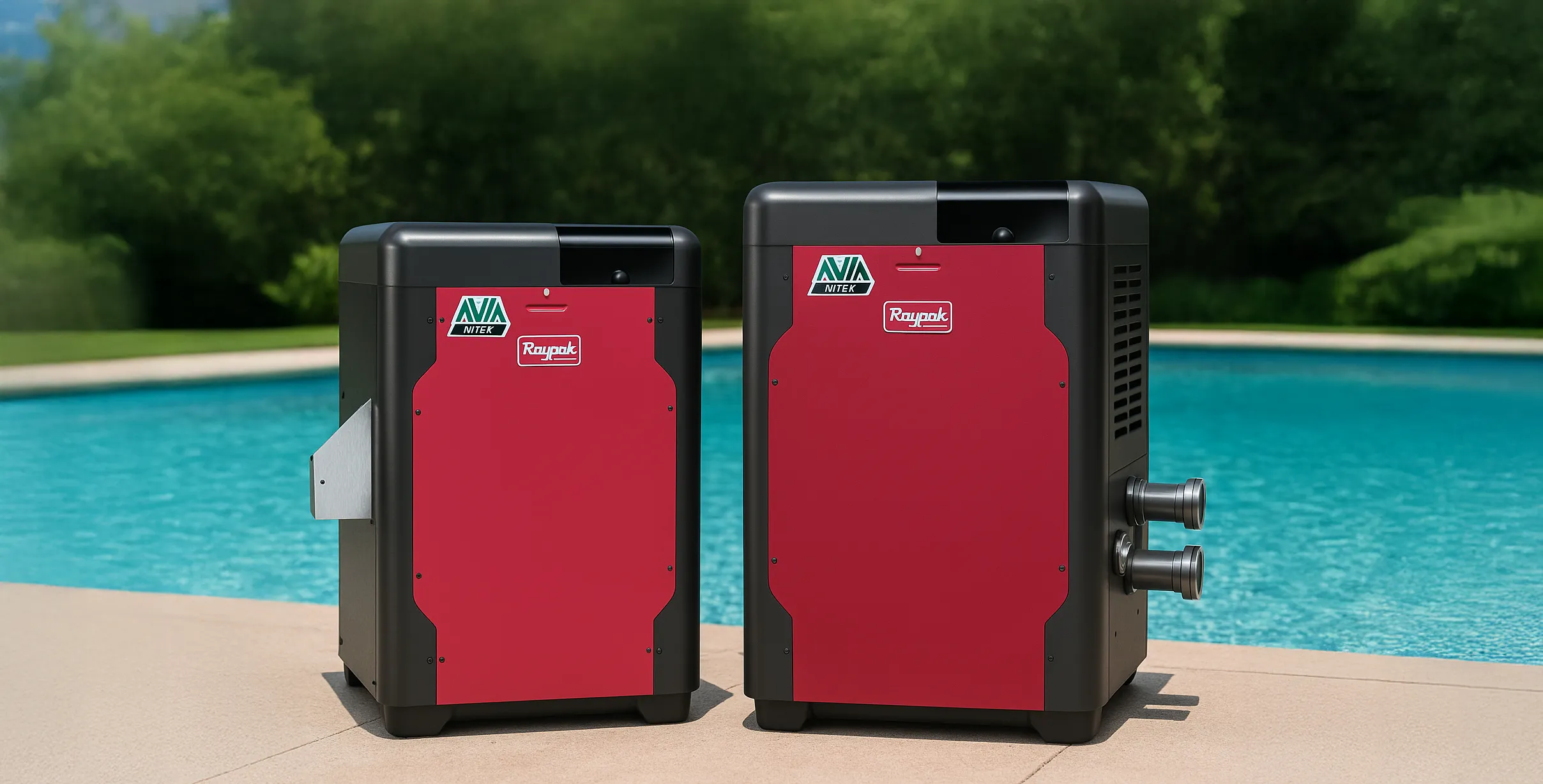Whether you’re working on a new construction project or upgrading an aging system, these technologies offer real benefits across residential and commercial settings.
So, what makes smart thermostats and zoning so essential in 2025? Let’s break it down.
What Is HVAC Zoning?

HVAC zoning is the process of dividing a building into different areas or “zones,” each with independent temperature control. This means instead of using a single thermostat to heat or cool the entire property, each zone can be adjusted separately based on usage, time of day, or personal preference.
For example, a home can have one thermostat upstairs and one downstairs. Or in a commercial setting, separate zones could be created for offices, meeting rooms, and storage areas.
Key benefits of zoning include:
- Increased comfort in every room
- Reduced energy consumption
- Less wear and tear on HVAC systems
- More flexibility for tenants or occupants
What Are Smart Thermostats?

Smart thermostats are Wi-Fi-enabled devices that allow users to control their HVAC system remotely via smartphones, tablets, or voice assistants. But they go far beyond remote access and can:
- Learn user habits and adjust automatically
- Detect occupancy and respond accordingly
- Integrate with weather forecasts
- Track energy use and provide insights
- Sync with zoning systems for optimal performance
Popular devices in Canada include Bosch Connected Control, Ecobee, Google Nest, Honeywell T-Series, and brand-specific apps like Panasonic Comfort Cloud for ductless units.
Why the Smart Thermostat and Zoning Combo Matters
Zoning systems and smart thermostats each offer strong benefits. But when they work together, the results are even more powerful.
With this combination, each zone is not only independently controlled but can also respond dynamically to changing conditions, schedules, and preferences. Here’s why this matters:
- You can heat or cool only the areas in use
- Temperatures can be adjusted remotely or automated entirely
- Comfort levels increase while energy costs drop
- The system adapts to lifestyle changes over time
For contractors, this is a chance to offer smarter, more customized solutions that clients will notice immediately.
Where Zoning Works Best
Zoning isn’t just for large buildings or new homes. It’s effective in many applications:
- New custom homes with multiple levels or layouts
- Renovations where one area is used more than others
- Light commercial offices and retail spaces
- Multi-family properties or condo units
- Older homes being retrofitted with ductless systems
In projects where ductwork is limited or missing entirely, ductless multi-zone systems — like those from Panasonic, Bosch, or Airquest — are already built for zoning. Adding smart control takes them to the next level.
What’s Needed to Install a Zoned HVAC System
Here’s what typically goes into a zoning setup:
- Zone dampers (installed inside ductwork)
- Multiple thermostats (one for each zone)
- A zoning panel or smart controller
- Compatible smart thermostats
- Optional sensors for occupancy or humidity
Most of these components are available off-the-shelf, and many smart thermostats integrate directly with zoning systems or via adapters.
Tips for HVAC Contractors
If you’re an HVAC contractor working across Ontario, offering zoning and smart thermostat upgrades can help you stand out and increase project value.
Here are some suggestions:
- Educate your customers. Many don’t know zoning exists or what it can do.
- Start with the basics. Even two simple zones can make a big difference.
- Choose compatible brands. Panasonic, Bosch, IBC, and Airquest offer systems that work well with smart controls.
- Talk about comfort and savings. Clients love both.
- Mention rebates. Some thermostats are eligible for provincial energy rebates, depending on the model and region.
Pair this with energy-efficient HVAC equipment, and your clients will thank you — in comfort and in cost savings.
Frequently Asked Questions from Clients
Is zoning worth the extra investment?
Yes. While it adds to the upfront cost, the long-term energy savings and comfort pay off quickly, especially in homes with multiple floors or businesses with variable occupancy.
Can I zone my home without ductwork?
Absolutely. Ductless multi-zone heat pumps are ideal for zoning. Each indoor unit acts as an independent zone with its own remote or smart controller.
Do smart thermostats really save energy?
Yes. Studies show properly used smart thermostats can reduce heating and cooling costs by 10% to 15% or more annually.
Do I need Wi-Fi?
Yes, for smart features like remote control, automation, and usage tracking. But even without Wi-Fi, most smart thermostats can still function manually.
Final Thoughts
Smart thermostats and zoning are reshaping how HVAC systems are designed, installed, and experienced. As energy costs rise and user expectations evolve, these technologies provide the perfect combination of efficiency, intelligence, and comfort.
For HVAC professionals, embracing zoning and smart controls is no longer optional — it’s an opportunity to lead. Whether your project is a residential retrofit or a commercial installation, combining zoning with smart thermostats delivers measurable results your clients will notice and appreciate.
If you’re sourcing zoning-compatible equipment or looking to stay ahead in the HVAC industry, Nordics offers a wide range of trusted products and support across Ontario and beyond.
Contact us today to explore smart HVAC solutions for your next project.




